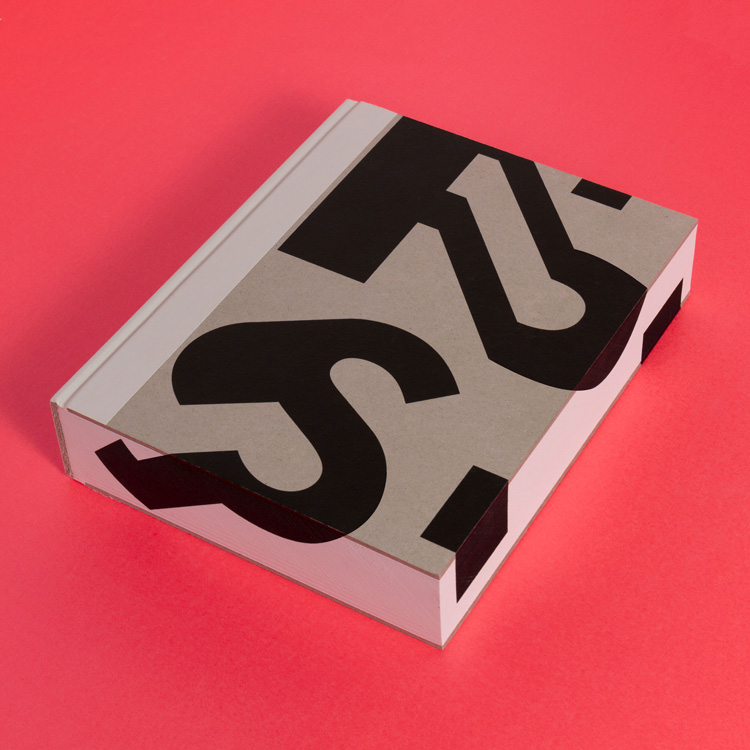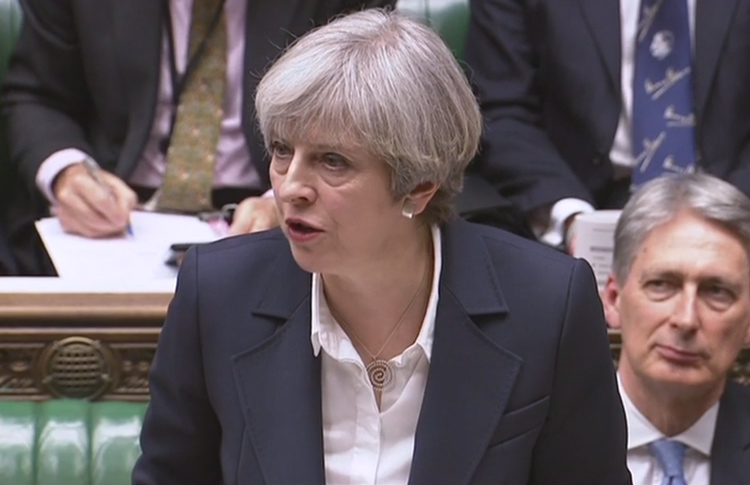5 important things that happened in design this week
From a book exploring the life and work of Paula Scher through to our poll launched in light of the General Election 2017 – the important design from the last seven days.
We explored the new book on the work of Paula Scher

Monographs documenting the lives of high-profile designers have become prolific over recent years, with readers becoming increasingly interested in the personalities of their heroes as well as in their work.
Independent publisher Unit Editions, which previously produced a monograph on Lance Wyman, released Paula Scher: Works earlier this month; a book on the life and work of the Pentagram partner.
We spoke to the book’s co-editor Adrian Shaughnessy about what it is that makes Scher a “remarkable” designer, as well as her political motivations and her refusal to be defined by her sex.
As well as her more maverick work – from printing graphics on the floor of a performing arts studio because “New Yorkers look at their feet”, to making letterforms out of a programming language – Shaughnessy also discusses Scher’s controversial viewpoints, such as her rejection of “group-think”.
“Paula’s about the individual,” he says. “She resists every attempt to turn her into a radical designer, or an icon for feminism.”
Paula Scher: Works follows the Pentagram partner’s self-authored monograph Make it Bigger, which was published in 2002. This new one aims to take a more “objective” look at Scher’s work, says Shaughnessy.
The monograph is available to order now through Unit Editions.
It was announced that a General Election would be happening this year – we asked designers their thoughts

British prime minister Theresa May u-turned on her promise not to call a general election until 2020 this week, when she set out her plan for the public to head to the polls on 8 June this year instead.
Martin Sorrell, CEO at advertising and branding consultancy parent group WPP, was one of the first to comment on the decision. In an interview with BBC Radio 4, he highlighted how a fresh Conservative term would allow the prime minister more leeway to adjust her Brexit plan, and added that he hoped it would leader to a “softer” Brexit that allows for the free movement of people.
“Our business is a talent business,” he said. “We invest about $12 billion (£9 billion) a year in people around the world.”
In light of the election announcement, Design Week has launched its own poll asking designers to anonymously indicate who they plan to vote for.
There will be more polls to follow, and we will be publishing an analysis of the results closer to election day. Take part in our poll here.
Apple confirmed it would be entering the self-driving car market

The iPhone is becoming increasingly autonomous, with the smartphone now capable of performing all sorts of complex functions with a simple, spoken request.
Apple is now bringing this autonomy onto the roads. Although the company is yet to branch out into car design, it has revealed this week that it will begin testing self-driving technology, using Lexus cars, on public streets in US state California.
Other companies that have previously been granted permits to test self-driving cars include Google’s Waymo, Tesla, Ford, BMW, Volkswagen and Nissan.
Apple joins a string of established automotive competitors, so it is yet to be seen whether it can successfully break into this market and compete with these car brands on a level playing field.
Steve Kenner, director of product integrity at Apple, said in a letter to the National Highway Traffic Safety Administration (NHTSA) last year that “established manufacturers and new entrants” presenting competing autonomous systems “should be treated equality” – perhaps reiterating that Apple is conscious it has a little way to go before becoming well-respected in the car engineering field.
Royal Museums Greenwich rebranded – with mixed reactions

Royal Museums Greenwich is the parent to four large-scale attractions in London; the National Maritime Museum, historical ship the Cutty Sark, planetarium the Royal Observatory and art gallery the Queen’s House.
The museum group revealed a rebrand this week, which did away with its splashing water photography and traditional serif logotype, and replaced it for a more abstract, line-drawn symbol and a bold, sans-serif typeface. The rebrand was completed by Jane Wentworth Associates (JWA) alongside Intro.
While Royal Museums Greenwich is predominantly focused on the history of the sea, the water imagery did not reflect the museum group’s other offerings, says JWA.
The new, dissected circular symbol aims to act as many symbols; the Greenwich Meridian Line, a globe, a clock and its hands and an old-style nautical navigational instrument.
While the branding aims to be open to interpretation and more encompassing of the museum group’s offering, the ambiguous symbol has caused some criticism, with one reader saying the old symbol was straightforward and “quintessentially maritime” while the new “art deco approach” takes the brand backwards.
However, other readers have commented on the “simplicity” of the new versatile logo. The clean, modern look reflects a branding trend being adopted by museums, which is the tendency for simple, typographic applications sans imagery, such as the Design Museum and the National Army Museum.
We prepared to discuss urban living with Ikea

Capital cities such as London have seen house prices rise and populations increase, resulting in more young people living in much smaller, space-efficient homes. Research also shows that people move house more frequently than before, with 17.4% of private renters in the UK having moved house between 2015 and 2016. So how are home product and furniture designers accommodating for these challenges?
We revealed this week that Design Week would be working with Ikea on a panel discussion looking at how to design for young, busy people living in urban environments.
Taking place on 18 May, the panel will include Ikea creative leader James Futcher alongside other industry people and Design Week editor Tom Banks. It will look to explain how to design products that suit the lifestyles of young people.
Complementing the talk will be an exploration of Ikea’s new PS collection, which is aimed at young urbanites regularly on the move and takes into consideration both convenience and changing tastes. It includes products such as a customisable cushioned chair and a self-watering plant pot set.
The panel discussion will take place on 18 May at PI Artworks, 55 Eastcastle Street, Fitzrovia, London W1W 8EG. There are a limited number of spaces available for any Design Week readers who would like to attend. If you are interested, email edward.aldridge@centaurmedia.com.
Got a design story? Get in touch sarah.dawood@centaurmedia.com.
-
Post a comment




